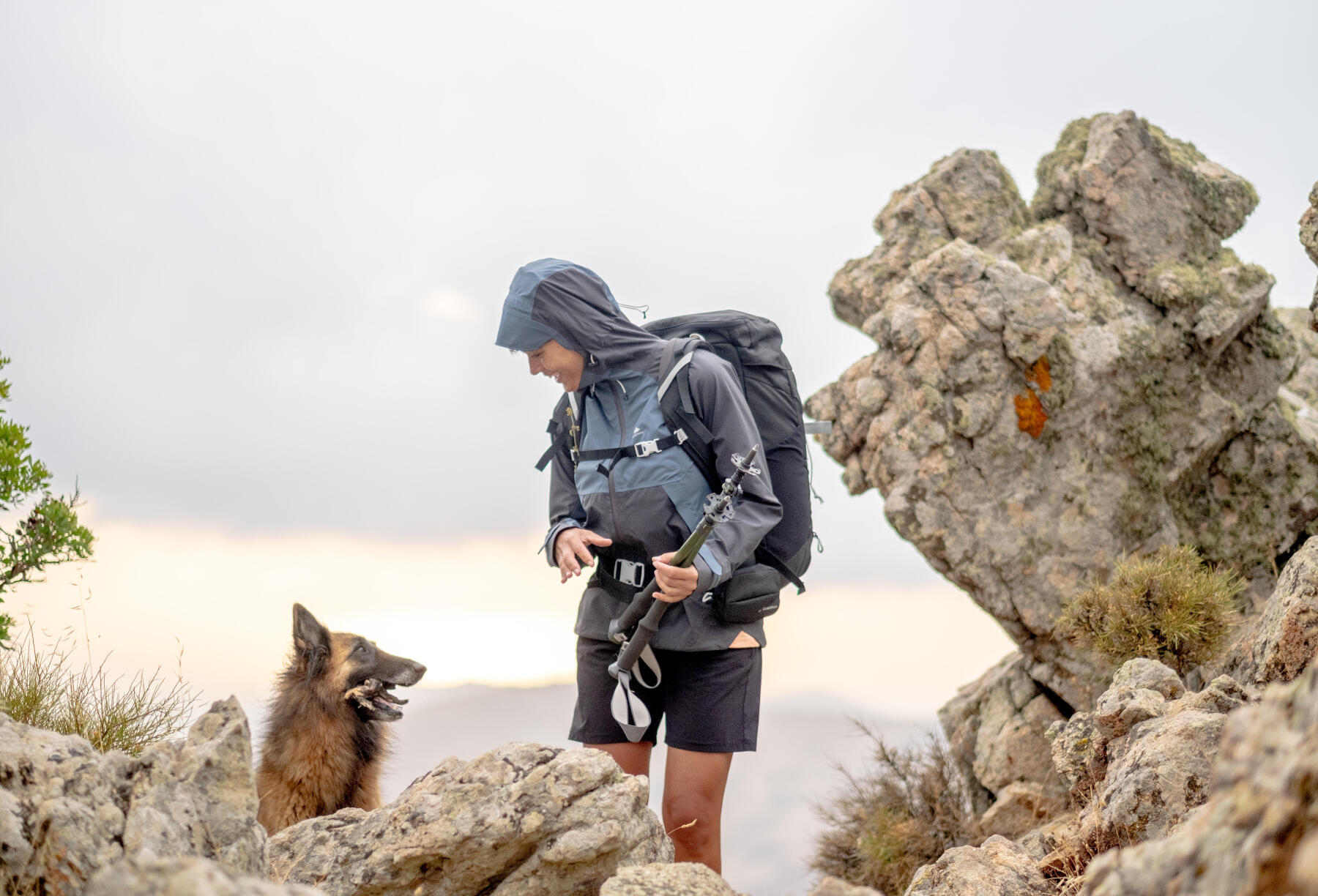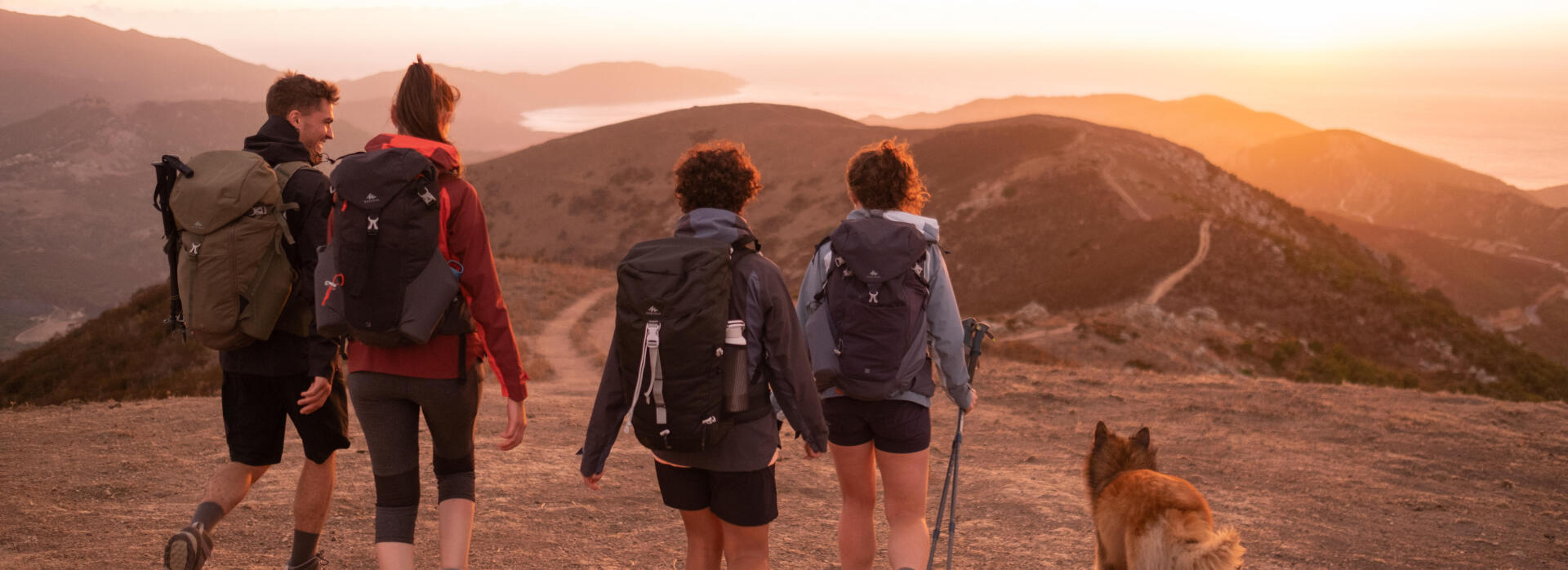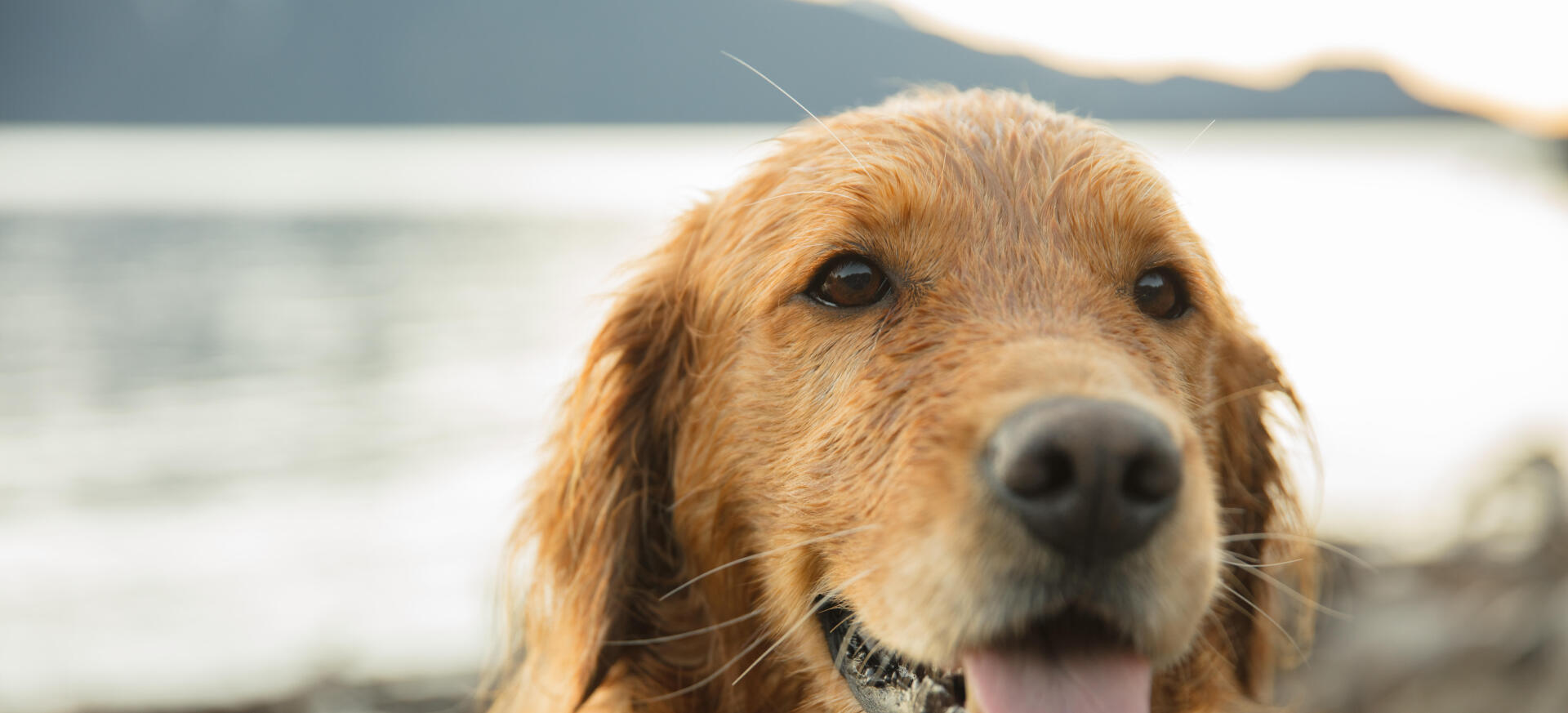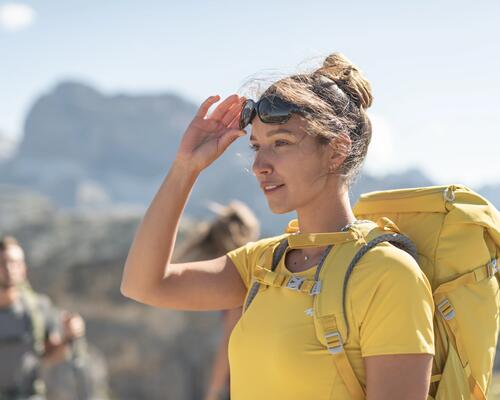Once you have planned your route, the next step is to prepare your kit.~There are two options depending on the breed, size and age of your animal and the type of hike (intensive or not).
1- The dog backpack
It consists of two side pockets of different sizes. This means that your companion can transport its own water, food and maybe even its "toys". However, be aware of the load your dog can carry, it is not a mule and the dog's back cannot carry a very heavy load. A dog in good health can carry a third of its weight. For safety, and if you are going to be walking for a long time, plan for your dog to carry a load of around a quarter of its own weight.
2 - Carrying your water and food in your own bag
Personally I opt for this approach. The advantage for the dog is greater freedom of movement.
As soon as your bag(s) is/are ready, it's time to prepare the dog's harness and again the choice of harness is made based on the dog and the chosen activity.
There are several shapes with the "x-back" type harness being the most suitable for dogs that are towing. The attachment point is located just in front of the tail and therefore the dog tows its entire weight. The main thing is that the dog is not attached "by the neck" as it is with a lead.
The final step is to connect to your dog using a lanyard with a shock absorber (elastic). Leashes for sled dogs work very well. The lead rope is then attached to the backpack stomach strap.







